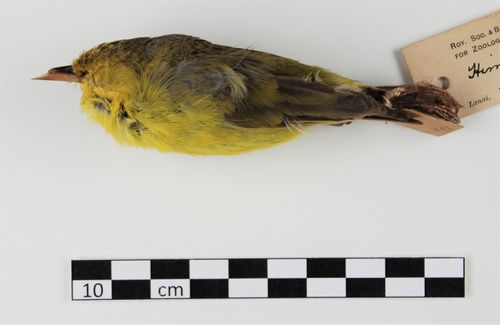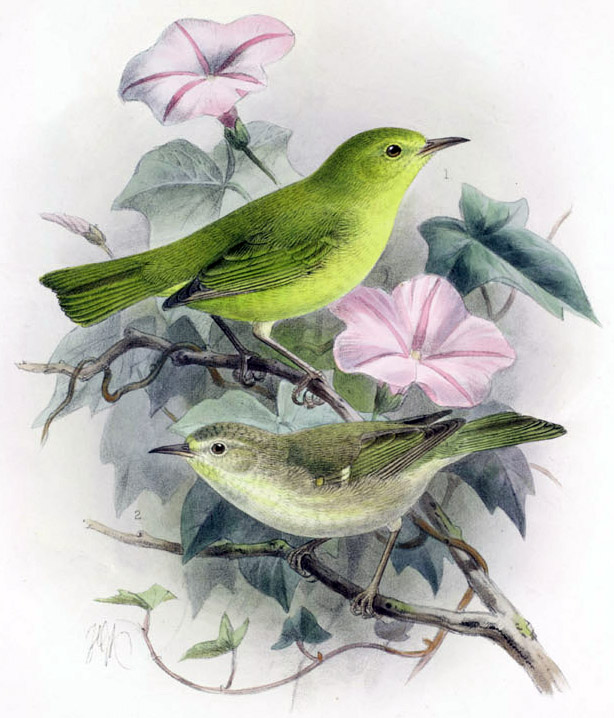Lānaʻi ʻalauahio

Names
- Common Name: Lānaʻi ʻalauahio or Lānaʻi creeper
- Scientific: Paroreomyza montana montana
Note that this page is for the subspecies on Lānaʻi (Paroreomyza montana montana). There is another subspecies called Maui ʻalauahio (Paroreomyza montana newtoni) that still exists on Maui.
Song
No recording available.
Conservation Status
Extinct. Last recorded sighting in the wild was in 1937. Note that the subspecies
Species Information
The Lānaʻi ʻalauahio or creeper is a subspecies of Paroreomyza montana. The Paraoremoyza genera are the oldest and most diverse nectarivorous Hawaiian honeycreepers (Ned 1989). The creeper’s pointy beaks supported their diet of nectar. Lānaʻi creepers stood out with plumage of primarily different shades of yellow, including some shades of green, white and a brown tail (Zoological Society of London 1848). The Hawaiian honeycreeper known as Lānaʻi ʻalauahio or Lānaʻi creeper was last seen on Lānaʻi in 1937.
Distribution
Lānaʻi
Habitat
Believed to have been common on Lānaʻi at elevations above 450- 600 m (Pyle & Pyle 2017).
Threats
When the island’s first city, Lānaʻi city, was built in 1923, many forest bird species, including the Lānaʻi creeper, experienced a massive decline (Doughlas 1994). This decline was heavily due to the increase in plantation work on island. Plantation workers brought chickens and other animals that carried avian diseases (Munro 1960). In addition to disease, rats were imported. Ultimately, population decline is assumed to be a result of introduced diseases and species associated with colonization and westernization, accompanying the pineapple plantation (Hobdy 1993). The Lānaʻi creeper were unable to salvage their population.
Photos

Paroreomyza montana subsp. montana (S.B.Wilson, 1890) collected in United States of America (licensed under http://creativecommons.org/licenses/by/4.0/)

John Gerrard Keulemans, Public Domain via Wikimedia
Additional Resources
Doughlas, H. (1994). Avifaunal Change in the Hawaiian Islands.
Hobdy R. 1993. Lana’i – a case study: the loss of biodiversity on a small Hawaiian Island. Pac Sci 47(3): 201-210.
Munro, George C. 1960. Birds of Hawaii. Charles E. Tuttle Co., Rutland, Vermont and Tokyo, Japan
Ned K. Johnson, Jill A. Marten, C. John Ralph, Genetic Evidence for the Origin and Relationships of Hawaiian Honeycreepers (Aves: Fringillidae), The Condor, Volume 91, Issue 2, 1 May 1989, Pages 379–396, https://doi.org/10.2307/1368317
Zoological Society of London. (1848). Proceedings of the Zoological Society of London.
